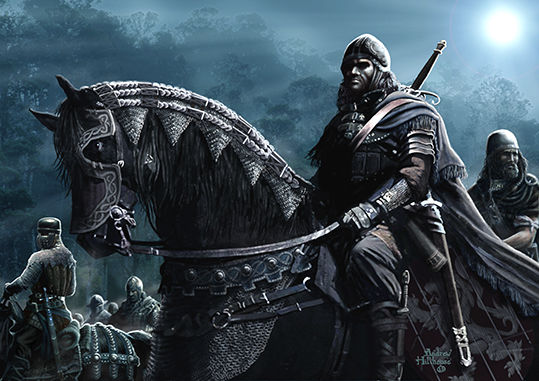
Liberators - William Wallace
Fom the Scotichronicon, Book 11, Chapter 28
“In 1297 the famous William Wallace, the hammer of the English, the son of the noble knight Malcolm Wallace, raised his head... When Wallace was a young knight, he killed the sheriff of Lanark, an Englishman who was dexterous and powerful in the use of arms, in the town of Lanark. From that time therefore there gathered to his side like a swarm of bees all those who were bitter in their outlook and oppressed by the burden of servitude under the intolerable rule of English domination, and he was made their leader.”
In 1296 Edward I "Longshanks" of England finally dispensed with his puppet king John Balliol of Scotland and took over direct administration of Scotland. The country was garrisoned with English troops and all seemed lost. Then, in 1297, a minor landowner's second son "raised his head" in Lanarkshire. The first act definitely known to have been carried out by William Wallace was his assassination of William de Heselrig, the English High Sheriff of Lanark, in May 1297, supposedly in retaliation for the murder of his wife. He then joined forces with William le Hardi, Lord of Douglas. Le Hardi was the first nobleman to join Wallace’s rebellion and this lent the struggle at least a cloak of respectability and legitimacy. Combining their forces at Sanquhar, Durisdeer and later at Scone Abbey, the two freedom fighters led a small contingent of lightly armoured but extremely committed horsemen to brutalise English occupied strongholds in southern Scotland. Using the vast Ettrick Forest as a base for raiding, they would strike at increasingly ambitious targets without warning, often having covered incredible distances within short periods of time.
As a result of these extremely vicious lightning raids, English garrisons began to stay within the protective walls of their castles or fled to fortifications on the coast where they could flee the growing rebellion by boat. Soon, no tax whatsoever could be collected by English officials in Scotland for their King in London. With the booty seized from their raid on the English Treasury at Scone, Wallace financed further rebellion including the successful Battle at Stirling Bridge fought on 11 September 1297.
Le Hardi would later be imprisoned in the Tower of London where he would subsequently die from maltreatment in 1298. His son, however, would grow into an avenger who would become a scourge of the English in Scotland. No doubt inspired by the actions of his father and Wallace, James, the Good, or the Black, Douglas would make the invader pay a heavy price for their treatment of the Douglas family.